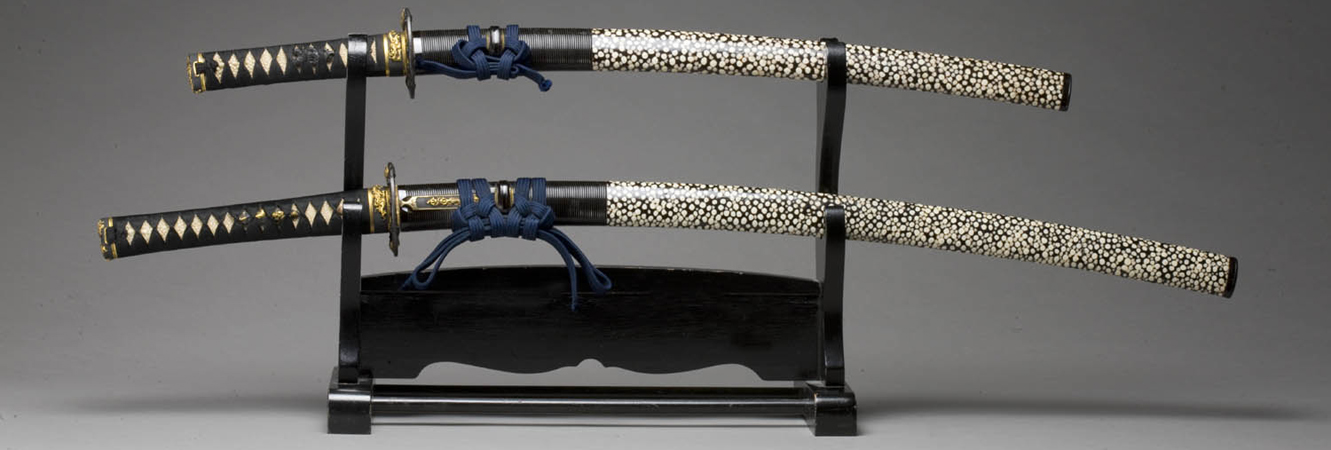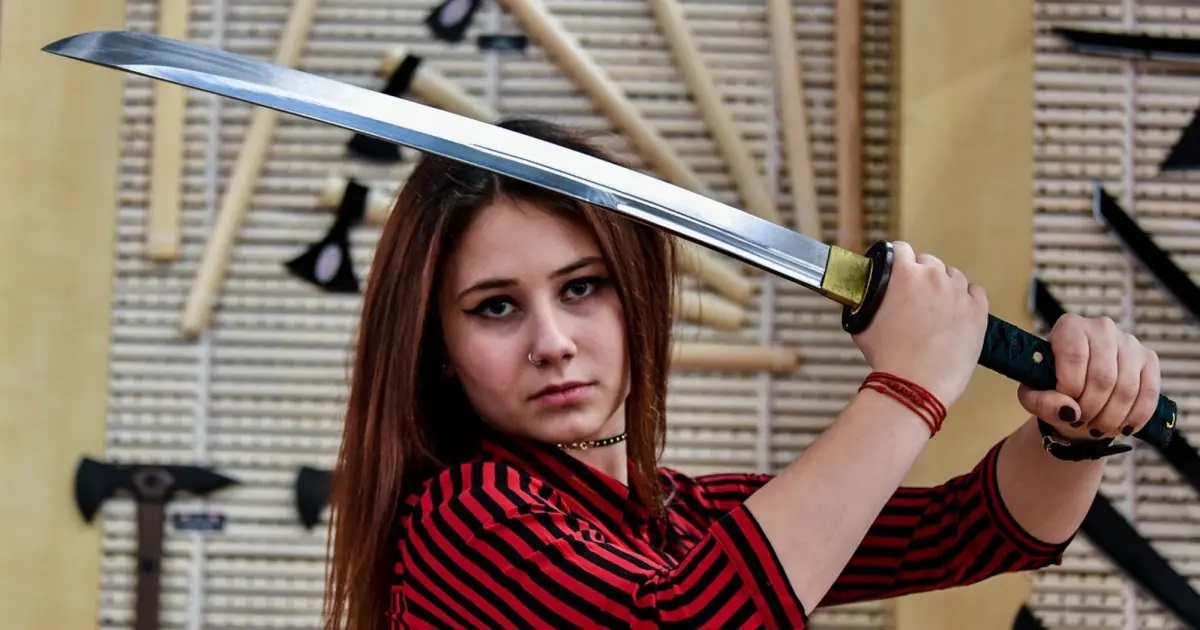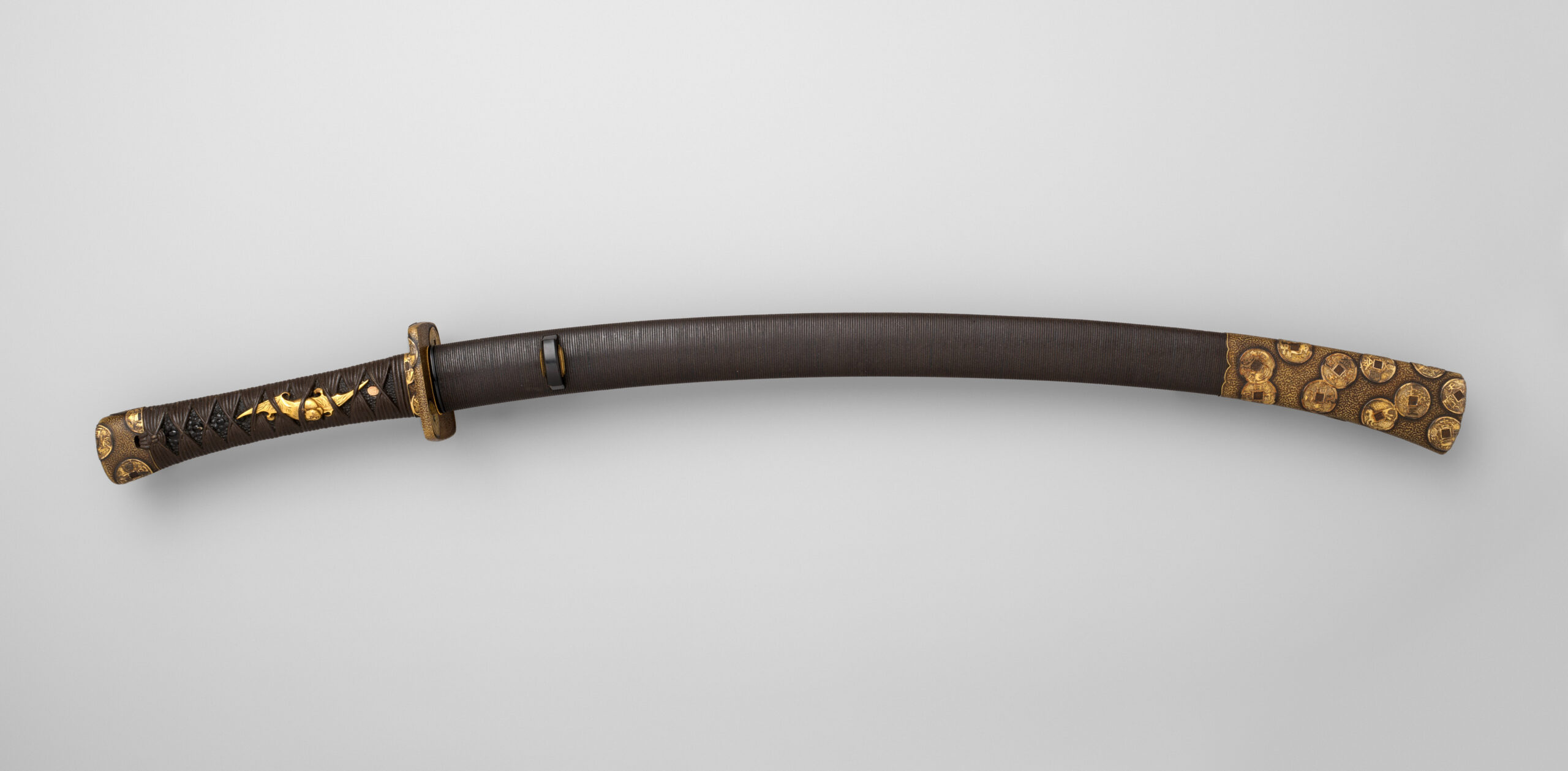Introduction to the wakizashi
As I delve into the captivating realm of Japanese swords, one blade stands out as a testament to the nation’s rich martial heritage – the wakizashi. This iconic companion to the renowned katana has etched its name in history, symbolizing the honor and discipline of the samurai warrior class. In this comprehensive exploration, we shall unveil the secrets that have shrouded the wakizashi for centuries, unraveling the intricate tapestry of its history, craftsmanship, and enduring cultural significance.
The history and significance of the wakizashi
The wakizashi’s origins can be traced back to the Muromachi period (1336-1573), a time when the samurai’s way of life reached its zenith. Designed as a secondary blade to complement the longer katana, the wakizashi became an indispensable part of the traditional daisho (paired swords) worn by the samurai. Its compact size, typically ranging from 12 to 24 inches, made it an ideal sidearm for close-quarters combat and a symbol of status and rank within the warrior class.
Beyond its practical applications on the battlefield, the wakizashi held a deeper symbolic meaning. It represented the unwavering spirit of the samurai, embodying the virtues of honor, loyalty, and self-discipline that were deeply ingrained in their code of conduct – the revered Bushido.
The craftsmanship behind the wakizashi
The creation of a wakizashi was a labor of love, a testament to the unparalleled skill and dedication of Japan’s master swordsmiths. Each blade was meticulously forged through a complex process that involved folding and hammering layers of tamahagane (a type of highly prized steel) to achieve unmatched strength and flexibility.
The art of sword-making was elevated to a spiritual level, with swordsmiths adhering to strict traditions and rituals. Every step, from the initial heating of the metal to the intricate polishing and hamon (the distinctive tempering pattern), was imbued with a profound reverence for the craft.
Different types and styles of wakizashi
Despite their shared purpose, wakizashi blades exhibited a remarkable diversity in their design and aesthetics. The most renowned styles included:
- Shinogi-zukuri: Characterized by a prominent ridge along the blade’s length, this style was favored for its strength and cutting ability.
- Hira-zukuri: With a flat, unridged blade, this style was renowned for its sleek and elegant appearance.
- Shobu-zukuri: A unique design featuring a pronounced curvature, often associated with the Mino province.
Beyond these traditional styles, wakizashi blades were adorned with intricate engravings, inlays, and other decorative elements that reflected the artistic mastery of their creators and the personal preferences of their owners.
Famous wielders of the wakizashi
Throughout history, the wakizashi has been wielded by legendary figures whose names have become synonymous with the art of swordsmanship. One such revered figure is Miyamoto Musashi, the renowned swordsman and author of “The Book of Five Rings.” His mastery of the wakizashi, combined with his philosophical insights, has left an indelible mark on the martial arts world.
Another iconic figure is Oda Nobunaga, the powerful daimyo (feudal lord) who played a pivotal role in unifying Japan during the Sengoku period. His wakizashi, adorned with intricate carvings and a golden tsuba (sword guard), was a symbol of his authority and prowess on the battlefield.
The role of the wakizashi in samurai culture
The wakizashi’s significance extended far beyond its martial applications. It was deeply intertwined with the intricate rituals and customs of the samurai class, serving as a constant reminder of their unwavering dedication to the way of the warrior.
One such ritual was the solemn act of seppuku, or ritualistic suicide, which was considered an honorable way for a samurai to atone for grave mistakes or preserve their honor in the face of defeat. The wakizashi played a crucial role in this solemn ceremony, serving as the blade with which the samurai would end their life.
Additionally, the wakizashi was an integral part of the samurai’s daily attire, worn alongside the katana as a symbol of their status and readiness to defend their honor at all times.
Collecting and caring for a wakizashi
In the modern era, the wakizashi has transcended its martial origins and become a highly sought-after collector’s item. Owning an authentic wakizashi is a privilege reserved for those who truly appreciate the blade’s historical and cultural significance.
Caring for a wakizashi requires a deep understanding of its delicate nature and a commitment to preserving its integrity. Proper storage, handling, and maintenance are essential to ensure the blade’s longevity and prevent any damage or degradation.
For collectors and enthusiasts alike, the wakizashi represents a tangible connection to Japan’s rich martial heritage, serving as a reminder of the dedication, discipline, and artistry that went into its creation.
Training with the wakizashi
While the wakizashi’s primary purpose was as a sidearm, it also played a crucial role in the training and practice of various Japanese martial arts. In disciplines such as iaido (the way of drawing the sword) and kenjutsu (the art of swordsmanship), the wakizashi was often used to hone one’s skills and develop a deeper understanding of the blade’s unique characteristics.
The compact size and maneuverability of the wakizashi made it an ideal training tool for close-quarters combat techniques and intricate footwork patterns. Its balanced weight and razor-sharp edge demanded precision and control from the practitioner, fostering a profound respect for the weapon and the martial traditions it embodied.
The symbolism of the wakizashi in modern culture
In contemporary times, the wakizashi has transcended its historical roots and become a potent symbol of Japanese culture and heritage. Its iconic shape and design have been incorporated into various art forms, from traditional ukiyo-e woodblock prints to modern fashion and jewelry.
Furthermore, the wakizashi’s enduring legacy has found its way into popular media, with numerous films, anime, and video games featuring characters wielding these legendary blades. These depictions not only pay homage to the wakizashi’s rich history but also serve as a testament to its enduring cultural relevance and the captivating allure it holds for audiences worldwide.
If you’re fascinated by the wakizashi’s rich history and cultural significance, consider exploring our collection of meticulously crafted replicas. Each piece is a work of art, painstakingly recreated to capture the essence of these legendary blades. Immerse yourself in the world of the samurai and experience the timeless beauty and craftsmanship that have made the wakizashi an enduring symbol of Japanese heritage. Visit our online store today and bring a piece of history into your collection.
Conclusion: The enduring legacy of the wakizashi
As we conclude our journey through the captivating world of the wakizashi, it becomes evident that this blade is far more than a mere weapon. It is a living embodiment of Japan’s rich cultural tapestry, woven with threads of honor, discipline, and unparalleled craftsmanship.
The wakizashi’s enduring legacy serves as a testament to the resilience of the samurai spirit, a spirit that transcends time and continues to inspire awe and reverence in those who appreciate the art of the sword. Whether as a collector’s item, a training tool, or a symbol of cultural pride, the wakizashi remains an enduring icon, a bridge between the past and present, and a reminder of the timeless values that have shaped Japan’s martial traditions.
As we bid farewell to this captivating journey, may the wakizashi continue to inspire future generations, igniting within them a deep appreciation for the artistry, discipline, and cultural heritage that have made this blade truly legendary.
